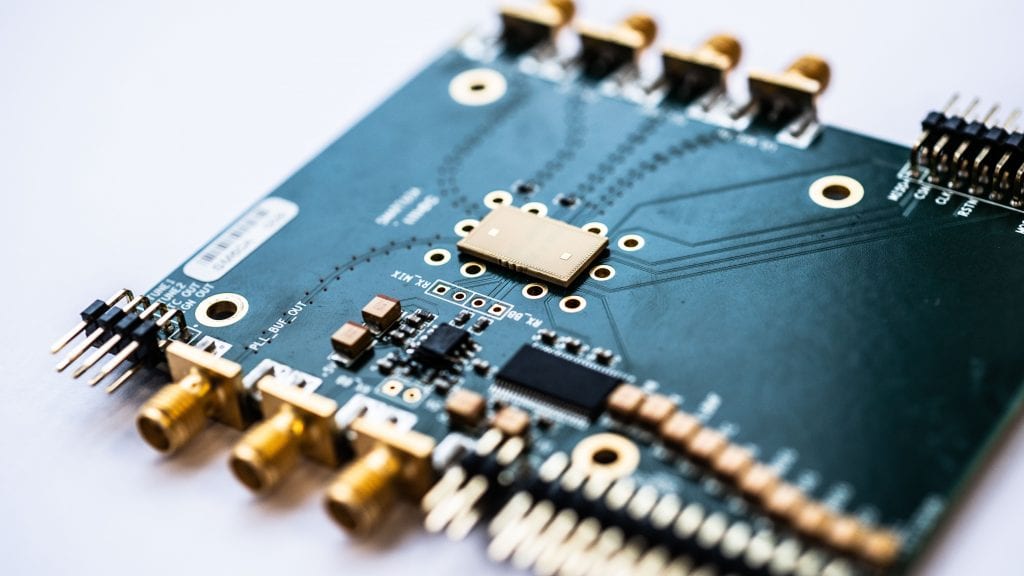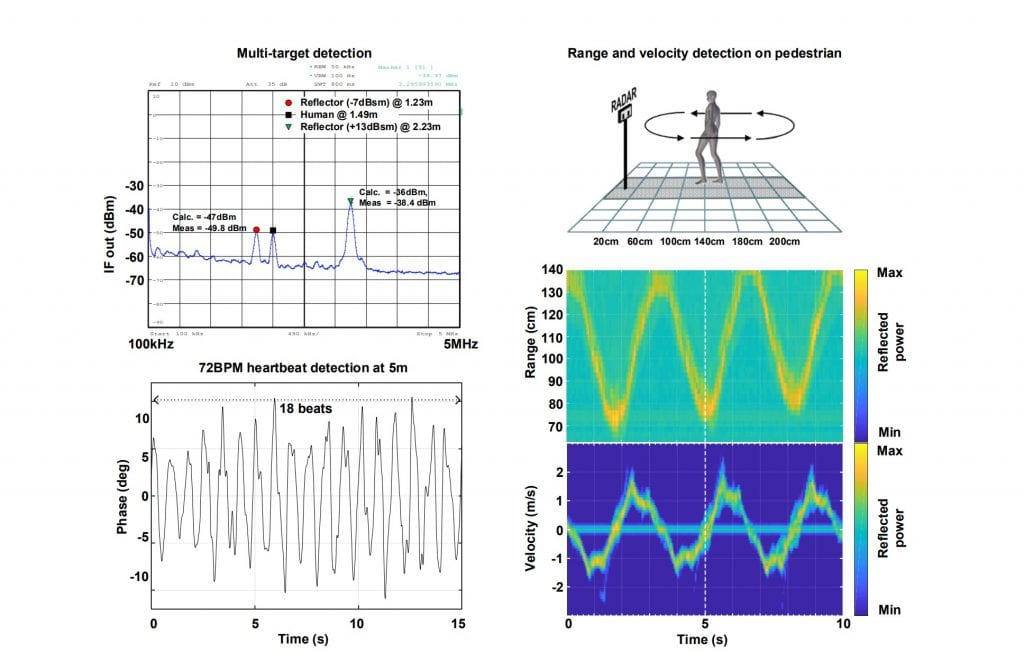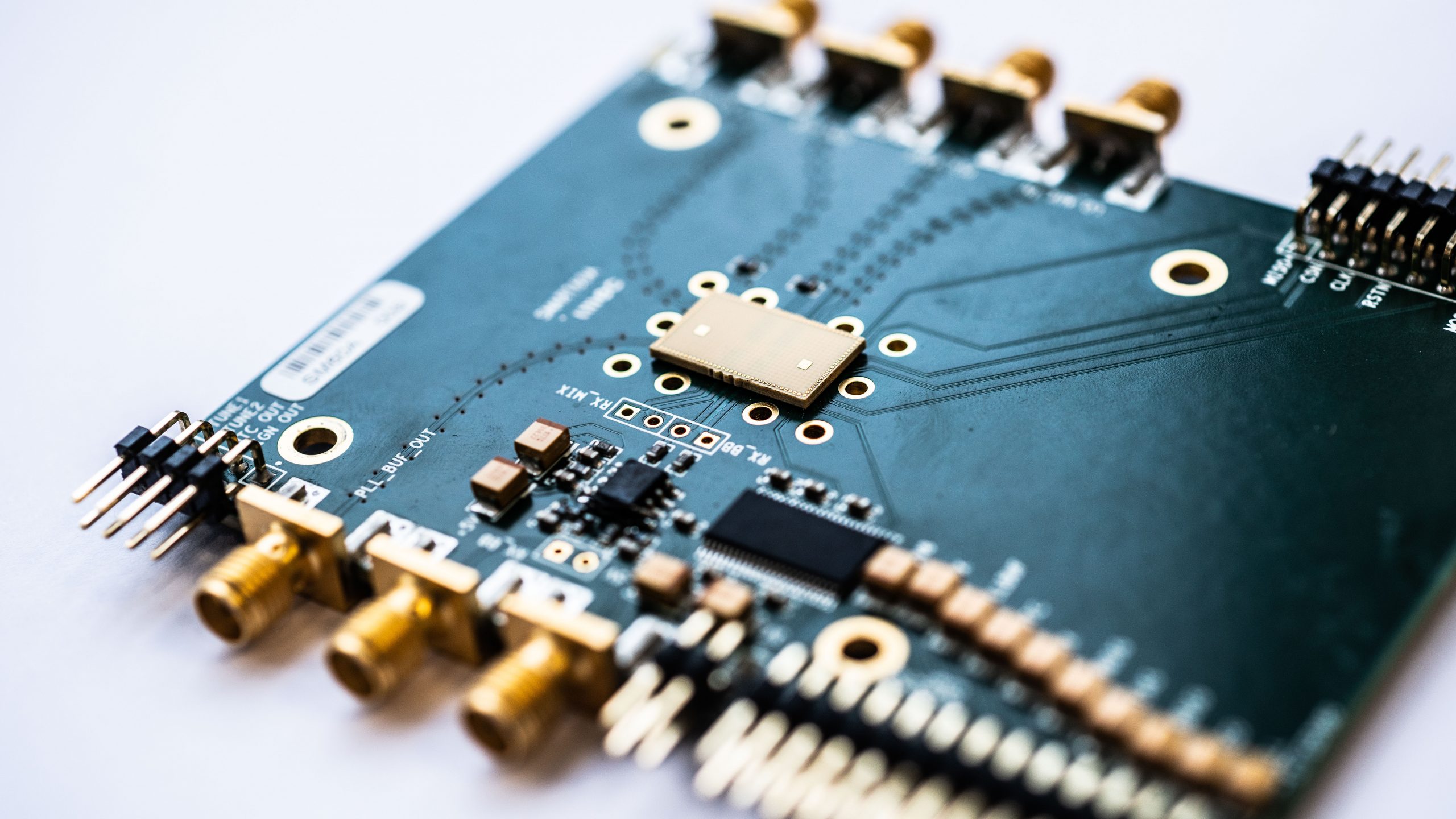PIETER VAN NUFFEL, imec, Leuven Belgium
Radar technology has evolved considerably over the past decade. Researchers have been able to make radar systems smaller and more energy-efficient while improving their performance. Thanks to advances in semiconductor technologies, millimeter-wave radars have become suitable for mass production at a low price per unit. The growing production volume of radar sensors for cars and the demand for more smart applications will help enable low-cost radar sensors. This means that radar technology is becoming ready for the next step: everyday use in wearables, mobile phones, drones, IoT sensors, and health monitoring devices. For instance, Google has already integrated a 60 GHz radar developed by Infineon into its Pixel 4 smartphone. This Soli radar can recognize hand gestures, so you can operate the phone by waving your hand above the screen.
“The first radar in a phone is a fantastic technological showcase, but for a real breakthrough of radar applications, some hurdles still have to be resolved,” says Barend van Liempd, program manager of radar at imec, an R&D hub for nano- and digital technologies. Ten years ago, imec started exploring how to transform radar sensors from bulky systems to compact integrated solutions. The integration into generally available CMOS technology was a historic breakthrough. “We want to make a difference by choosing CMOS instead of silicon-germanium. Then the transceiver can be integrated into the digital post processor, which offers the speed and power benefits of scaled CMOS,” says van Liempd. But to get the technology into battery-powered devices, low energy consumption is essential. “You can integrate a radar chip in a mobile phone, smartwatch, or drone, but you don’t want to charge the battery every hour. Today, reducing the power output is the big challenge in this research field,” he says.
The 60 GHz radar, a jack of all trades
A radar operating at a lower frequency usually consumes less power but is also less sensitive. A 24 GHz radar, for example, combines low power consumption with moderate resolution, but the radar would be relatively large. On the other hand, if you want to detect micro-movements with very high accuracy, a radar operating at 140 GHz seems better suited. It would be a tiny sensor achieving a much better resolution at the cost of increased power consumption. Between these two extremes lies the 60 GHz radar, which combines the best of both worlds. On the one hand, by achieving a 2-cm range resolution, the sensor can be used for accurate motion detection. On the other hand, the 60 GHz radar can be made sufficiently compact and energy-efficient for integration into tiny, battery-powered devices.
In August, imec revealed a prototype of a low-power 60 GHz radar chip (FIGURE 1). Thanks to a new transceiver architecture, the system only consumes 62 mW, which is significantly lower compared to state-of-the-art radars in this frequency range. A quick start-up time (1 microsecond) supports aggressive duty-cycling for further power reduction. The 4.15 mm² transceiver chip is integrated with 28nm bulk CMOS technology, ensuring a low-cost solution at high volume production.

The imec researchers used a frequency-modulated continuous-wave (FMCW) radar, which has the advantage of efficient integration into CMOS technology. Moreover, this type of radar architecture allows measuring both the absolute distance and the moving target’s speed. An FMCW radar modulates the carrier frequency of the emitted radio wave over a specific bandwidth. This is accomplished by generating chirps: the frequency increases linearly over time, according to a sawtooth function. When the reflected wave returns, the time delay and distance to the target can be determined based on frequency difference. “For accurate detection, you need linear chirps. You also need to reach a high modulated frequency, as the bandwidth determines the resolution. The big challenge was to design a radar that meets all these conditions without consuming too much power,” explains van Liempd.
Imec’s new radar design exactly achieves this challenge. The low-power radar generates modulated waves centered around 60 GHz, with a linear frequency increase by 7.2 GHz (or 12 %) in just 51.2 microseconds. The modulated bandwidth of 7.2 GHz determines the sensor’s ultra-fine resolution, making it suitable for 3D sensing of finger motions, hand swiping, and gestures. Experiments also have demonstrated the sensor’s indoor capability for multi-target detection, heartbeat detection at 5 meters and accurate tracking of pedestrian position and velocity (FIGURE 2).

Sensing vital signs
Compared with the 79 GHz band – which in most countries is reserved for automotive applications – the ISM band between 57 and 66 GHz is license-free. This freedom enables the development of new IoT applications for industrial and medical purposes. “In industry 4.0, radar enables human-robot collaboration: equipping robots with a sensing system ensures a safe and more efficient production environment,” describes van Liempd. “In the context of health, radar applications can improve the reliability and comfort of monitoring vital signs. Heartbeat monitoring via radar, for instance, is less invasive compared to an ECG monitoring system. Radar-based sensors are also eligible for non-invasive fall detection systems and can help reduce attention time in elderly care.”
Moreover, the low-power radar chip can be integrated in battery-powered devices, including fitness trackers and smartphones. “This especially opens up new possibilities for personalized healthcare or sports,” says van Liempd. “Think of a phone that automatically registers tennis strokes in 3D or a wearable that analyzes the specific movements of different body parts during running. Or imagine a phone on your bedside table that monitors your sleep quality by tracking your breathing rate and heart rate variability.”
In the long term, van Liempd is convinced that radar will shape how we interact with smart devices. “If a radar chip can be integrated into a mobile phone, then it might as well be integrated into other devices. Radar technology can not only replace swiping but also your keyboard or mouse to enable intuitive human-computer interaction,” he said. “A radar sensor can follow the movement of your palm to allow interaction on the screen. It will even become possible to control augmented or virtual reality with your hands or interact with holograms. The range of applications is as broad as one can imagine.”
